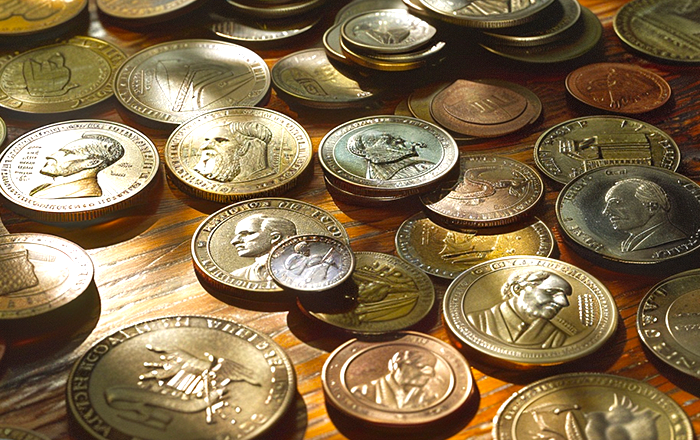How to Raise Your Credit Score Fast in the U.S.

A U.S. Essential: How to Raise Your Credit Score
Hi, this is Suzuki from EcoDrive.
Last time, I covered the basics of credit history; today I’d like to share some practical tips for boosting your credit score.
You can read the previous post here!
In the U.S., your credit score dramatically affects how easy—or hard—it is to secure financing.
Everything I’m about to share comes from personal experience, so I hope it helps!
The videos embedded in this article are narrated in Japanese, but English subtitles are available.
Core Principle for Raising Your Score: Pay on Time
There are a few basic—but crucial—steps to improve your credit score.
First and foremost: always make payments by the due date.
It may sound obvious, but in the U.S. your entire credit reputation hinges on borrowing money and then repaying it, so on-time payments have the single biggest impact on your score.
Conversely, late payments can drag your score down fast.
As I’ll explain later, never using your card at all isn’t ideal either, so you need to use it strategically.
By sticking to this principle myself, I’ve been able to nudge my score upward, little by little.
Score-Boosting Technique: Hold Multiple Credit Cards

Everything so far has been fundamental; now let’s talk strategy.
If you can qualify, carrying more than one credit card is a faster way to lift your score.
Why? Because it directly affects your total available credit—the maximum you’re allowed to borrow.
As I mentioned last time, most newcomers start with a limit of just \$500 or \$1,000.
As you build trust, those limits rise, reflecting the bank’s growing confidence in you.
Opening a New Credit Card Adds Another Chunk to Your Limit
What happens when you bump your collection up to two cards?
If you have one credit card with a \$5,000 limit, that’s the total amount of credit available to you.
But if you hold several cards—each with a \$5,000 limit—your perceived borrowing power grows.
For example, three cards at \$5,000 each give you \$15,000 in total available credit.
Because this overall limit directly affects the utilization rate (explained in the next section), holding multiple cards with higher limits can significantly improve your credit score.
Credit Utilization: How Much of Your Limit Are You Using?
Next, let’s talk about credit utilization—the percentage of your available limit that you’re actually using. Keeping this ratio in a healthy range is critical for your score. In general, staying below 20 % is considered ideal.
With a \$5,000 limit, 20 % equals \$1,000.
Living for weeks—or an entire month—on just \$1,000 is unrealistic, so you’ll need to pay the balance down frequently.
When you first open a card, your limit may be even lower, which means you’ll have to use the card and then pay it off almost right away.
Carrying Multiple Cards Gives You Breathing Room on Utilization
With only one card, you’ll end up treating it almost like a debit card—charging a little and paying it off right away.
But once you add more cards and your combined credit limit grows, the picture changes.
For example, if you hold ten credit cards each with a $5,000 limit, you now have a total available credit line of $50,000.
To maintain the ideal utilization rate, you’d only need to keep your combined balance under $10,000 (20 % of $50,000).
That’s why, after you’ve used your first card for a while, it’s smart to apply for a second one.
【Heads-up!】If your application gets rejected, it can knock your credit score down.
Just like with your first card, choose one you’re likely to be approved for.
It’s Not About Charging a Lot—It’s About Keeping Utilization Low
Many people assume that the more they swipe their credit cards, the faster their score will rise, but the key metric is utilization.
If your utilization climbs too high, lenders may decide you’re carrying too much debt for your income—or simply not managing your spending well.
That can drag your credit score down, so in the beginning it’s best to pay balances off well before they get close to the limit.
*Tip: In the U.S. most banks let you pay through an app, so you can knock down your balance at almost any time.*
Check Your Credit Score Regularly

Make it a habit to monitor your current credit score on a regular basis.
By keeping tabs on your score, you always know exactly where you stand—making it easier to plan your next move.
For instance, once your score has climbed high enough, you might decide it’s time to apply for another card.
Many card issuers and banks let you check your score for free.
Most banks display your latest credit score right inside your online account—just log in to see it.
Use Apps to Monitor Your Credit Score
You can also track your credit score with dedicated apps.
Free tools like Credit Karma and Credit Sesame offer plenty of data in an easy-to-navigate interface.
With these apps you can watch your score shift in real time and take action whenever necessary.
The Big Three Credit Bureaus
Your credit score is calculated primarily by the three major credit bureaus: Experian, Equifax, and TransUnion.
While the scores are usually similar, Experian’s tends to be the most conservative.
Personally, I focus on my Experian score—if that one looks good, the other two usually follow suit.
That wraps up the basics for keeping a solid credit score in the U.S.
Some of the tips above are quite specific, so even after you secure your first card, keep these tactics in mind to build a great score more easily.
In the next post, I’ll explain the real-world benefits I’ve enjoyed from having a strong credit score.
Our Services
We offer comprehensive automotive solutions—buy, sell, rent, and repair in one place.
Car Sales
Browse our lineup of quality used cars with transparent pricing and up to a two-year warranty on select models.
View InventoryAuto Repair
Get expert service from our certified Toyota Master Mechanic. We primarily service Toyota vehicles.
Schedule ServiceTrade-in / Sell
We pay top dollar for your vehicle—especially hybrids. Count on fair, transparent appraisals.
Get EstimateCar Rentals
Choose between fuel-saving hybrid rentals and a Tesla with Full Self-Driving Capability—both at competitive rates.
Reserve Now




